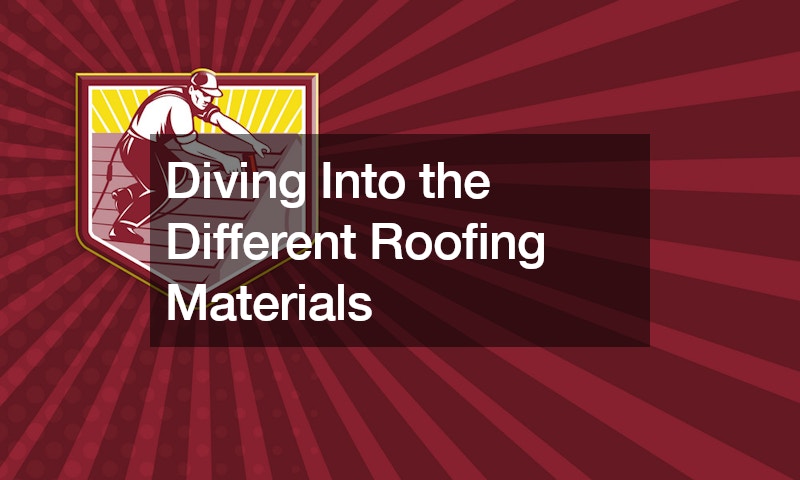When it comes to constructing or renovating a home, one of the most critical decisions revolves around choosing the right roofing material. The roof not only provides shelter but also plays a significant role in the overall aesthetics, durability, and functionality of a building.
With a plethora of options available in the market, each boasting its own set of advantages and drawbacks, it’s essential to dive deep into the characteristics of various roofing materials to make an informed choice.
Asphalt Shingles: A Common Choice
Asphalt shingles stand out as one of the most popular roofing materials, known for their affordability, versatility, and ease of installation. Traditional three-tab asphalt shingles have long been a staple in roofing projects, offering a cost-effective solution for residential and commercial buildings alike. However, architectural shingles have emerged as a modern alternative, featuring a more dimensional look without the traditional tab design.
What makes asphalt shingles so appealing is their varying lifespans, ranging from 10 to 50 years depending on the quality chosen. Basic asphalt shingles can typically last between 15 to 20 years, with some premium options boasting warranties of up to 50 years. Despite being lightweight and relatively low-cost, asphalt shingles offer decent durability and weather resistance, making them a go-to choice for many roofing projects.
Wooden Shingles: Embracing Natural Beauty
Wooden shingles, particularly those made from cedar, exude a timeless appeal and natural beauty that adds charm to any property. These shingles have been used for centuries, offering excellent insulation properties and a rustic aesthetic. However, proper installation and maintenance are crucial to ensure longevity and prevent issues like rot, mold, and mildew.
Unlike asphalt shingles, wooden shingles require a specific drying process to maintain their integrity. When wet, they swell to create a watertight seal, but adequate drying is necessary to prevent damage. In regions like New England, where wooden shingles are prevalent, ensuring proper ventilation underneath the roof is vital for optimal performance and longevity.
Metal Roofs: Durability and Resilience
Metal roofing has gained popularity in recent years due to its exceptional durability, longevity, and resistance to various weather conditions. Made from materials such as steel, galvanized steel, galvalume, and copper, metal roofs offer unmatched strength and resilience against wind, snow, and rain.
Unlike traditional asphalt or wooden shingles, metal roofs provide a continuous barrier against the elements, minimizing the risk of leaks and water damage. Additionally, metal roofs are lightweight and low-maintenance, making them an attractive option for homeowners seeking long-term value and performance.
Tile Roofs: Timeless Elegance and Strength
Tile roofs, including clay and slate options, are renowned for their timeless elegance and exceptional durability. While clay tiles offer a Mediterranean-inspired aesthetic, slate roofs exude a sophisticated charm that enhances the curb appeal of any property.
However, tile roofs come with their own set of considerations, primarily regarding weight and structural support. The dense nature of clay and slate tiles necessitates robust support systems to accommodate the added load. Despite the higher initial cost and installation complexities, tile roofs can last for decades, with some boasting lifespans of over 100 years when properly maintained.
Choosing the Right Roofing Material
When it comes to selecting the ideal roofing material for your project, it’s essential to consider factors such as cost, durability, aesthetics, and climate suitability. While asphalt shingles offer affordability and versatility, wooden shingles exude natural beauty but require diligent maintenance. Metal roofs provide unmatched durability and resilience, while tile roofs boast timeless elegance and longevity.
Ultimately, the best roofing material depends on your specific needs, budget, and preferences. Consulting with roofing professionals and weighing the pros and cons of each option can help you make an informed decision that ensures years of protection and satisfaction for your home or building.
When it comes to roofing materials, several options are prevalent in construction projects. Asphalt shingles are among the most common choices, prized for their affordability, versatility, and ease of installation. Metal roofs have also gained popularity due to their durability, weather resistance, and low maintenance requirements. Wooden shingles offer a natural aesthetic appeal and excellent insulation properties, although they require proper maintenance to prevent issues like rot and mold. Additionally, tile roofs, including clay and slate options, provide timeless elegance and longevity, albeit with higher initial costs and installation complexities. Each roofing material comes with its own set of advantages and considerations, making it essential for homeowners and contractors to weigh factors such as cost, durability, aesthetics, and climate suitability when making their selection.
Whether you opt for the traditional charm of asphalt shingles, the rustic appeal of wooden shingles, the modern resilience of metal roofing, or the timeless elegance of tile roofs, investing in quality roofing materials is key to safeguarding your property for years to come.
.


